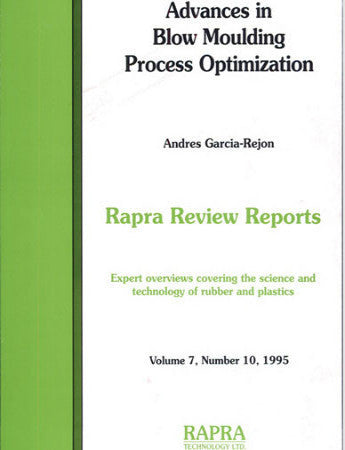Hot Runners in Injection Moulds
The technology of hot runners in plastic moulds is becoming more widely used, and this has been accompanied by an increase in the range of hot runner systems available. This development has meant that in manufacturing practice, the user of hot runner moulds is faced with the problem of how to make an informed comparison between the systems on offer from the mass of technical information at his disposal. The large range of hot runner systems on the market and the complex link between their design and the result obtained in practice means that many designers and users have difficulty in making the best choice. Besides economic and technical considerations, this choice must also take into account the specific properties of the plastics. An understanding of the physical processes taking place in the mould during injection forms a basis for informed mould building and optimum selection of the hot runner system, and for its subsequent operation. This is an aspect to which this book gives special attention.
The aim of this book is to give an objective view of the topic based on personal experience. It introduces a logical division of hot runner systems, illustrates the design of nozzles, manifolds, and other system components, discusses the principles of selection, building, installation and use, analyses the causes of faults and suggests ways of eliminating them and presents examples of applications.
Subjects covered are:
-Types of Hot Runner System
-Conditions for Use of Hot Runners
-Links with Technology
-Structure of a Hot Runner
-Thermal Balance and Temperature Control
-Filling Balance
-Choosing a Hot Runner System
-Special Injection Processes using Hot Runners
-Special Hot Runner Mould Designs
-Use of Moulds with Hot Runners
-Disruptions to the Operation of Hot Runner Moulds and Typical Moulding Defects
-The Way Ahead for Hot Runner Technology
The aim of this book is to give an objective view of the topic based on personal experience. It introduces a logical division of hot runner systems, illustrates the design of nozzles, manifolds, and other system components, discusses the principles of selection, building, installation and use, analyses the causes of faults and suggests ways of eliminating them and presents examples of applications.
Subjects covered are:
-Types of Hot Runner System
-Conditions for Use of Hot Runners
-Links with Technology
-Structure of a Hot Runner
-Thermal Balance and Temperature Control
-Filling Balance
-Choosing a Hot Runner System
-Special Injection Processes using Hot Runners
-Special Hot Runner Mould Designs
-Use of Moulds with Hot Runners
-Disruptions to the Operation of Hot Runner Moulds and Typical Moulding Defects
-The Way Ahead for Hot Runner Technology
Daniel Frenkler has nearly 40 years of experience in the plastic and tool industry in Poland and Sweden. His management career in the fields of injection moulding technology, mould making, mould and product design in Poland, and from 1981 specialisation in mould design in Sweden, make him the ideal person to write this book.
He is a co-author (with Henryk Zawistowski) of two fundamental mould design handbooks (1971 and 1984). He has published over 50 articles in technical magazines about the design of hot runners and injection moulds.
Henryk Zawistowski, too, has nearly 40 years of experience in industry and education in Poland. He worked as a mould designer, and from 1970-1977 was a consultant to BASF, in Poland. In 1980 he became a lecturer at the Technical University in Warsaw, where he devised a theory for shaping internal quality features in injection moulded items.
Based on his industry knowledge and scientific experience, he developed a system of professional training for technicians in the area of injection moulding, mould design and use of injection moulding machines. In 1990 he established an education centre, PLASTECH and a publishing company PLASTECH. Henryk Zawistowski has published widely in the field of injection moulding.
The authors: Daniel Frenkler and Henryk Zawistowski, both graduated in mechanical engineering from the Technical University of Warsaw.
He is a co-author (with Henryk Zawistowski) of two fundamental mould design handbooks (1971 and 1984). He has published over 50 articles in technical magazines about the design of hot runners and injection moulds.
Henryk Zawistowski, too, has nearly 40 years of experience in industry and education in Poland. He worked as a mould designer, and from 1970-1977 was a consultant to BASF, in Poland. In 1980 he became a lecturer at the Technical University in Warsaw, where he devised a theory for shaping internal quality features in injection moulded items.
Based on his industry knowledge and scientific experience, he developed a system of professional training for technicians in the area of injection moulding, mould design and use of injection moulding machines. In 1990 he established an education centre, PLASTECH and a publishing company PLASTECH. Henryk Zawistowski has published widely in the field of injection moulding.
The authors: Daniel Frenkler and Henryk Zawistowski, both graduated in mechanical engineering from the Technical University of Warsaw.




